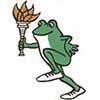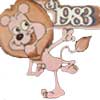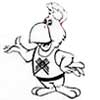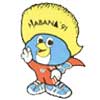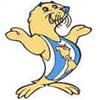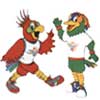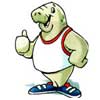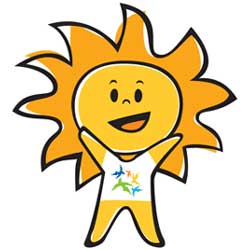Halloween is the one of the oldest holidays still celebrated today. It's one of the most popular holidays, second only to Christmas. While millions of people celebrate Halloween without knowing its origins and myths, the history and facts of Halloween make the holiday more fascinating.
Some people view Halloween as a time for fun, putting on costumes, trick-or-treating, and having theme parties. Others view it as a time of superstitions, ghosts, goblins and evil spirits that should be avoided at all costs.
As the Christian debate goes on, celebrating Halloween is a preference that is not always viewed as participating in an evil holiday. Halloween is often celebrated with no reference to pagan rituals or the occult.
Halloween History
Halloween is on October 31st, the last day of the Celtic calendar. It was originally a pagan holiday, honoring the dead. Halloween was referred to as All Hallows Eve and dates back to over 2000 years ago.
All Hallows Eve is the evening before All Saints Day, which was created by Christians to convert pagans, and is celebrated on November 1st. The Catholic church honored saints on this designated day.
Origin of Halloween
While there are many versions of the origins and old customs of Halloween, some remain consistent by all accounts. Different cultures view Halloween somewhat differently but traditional Halloween practices remain the same.
Halloween culture can be traced back to the Druids, a Celtic culture in Ireland, Britain and Northern Europe. Roots lay in the feast of Samhain, which was annually on October 31st to honor the dead.
Samhain signifies "summers end" or November. Samhain was a harvest festival with huge sacred bonfires, marking the end of the Celtic year and beginning of a new one. Many of the practices involved in this celebration were fed on superstition.
The Celts believed the souls of the dead roamed the streets and villages at night. Since not all spirits were thought to be friendly, gifts and treats were left out to pacify the evil and ensure next years crops would be plentiful. This custom evolved into trick-or-treating.
Halloween Comes to America
Traditional Halloween symbols (witches, black cats, pumpkins, candles, masks, parties and pranks) appeared in the U.S. during the late 1800's. In 1848, millions of Irish emigrants poured into America as a result of the potato famine. With this sudden influx of people, the holiday of Druidism found its new home on alien shores. "Proudly Celtic, they called Halloween Oidche Shamhna (`Night of Samhain'), as their ancestors had, and kept the traditional observances" [Common Boundary, Sep./Oct. 1993, p. 31].
 The Jack-o-lantern is the festival light for Halloween and is the ancient symbol of a damned soul. Originally the Irish would carve out turnips or beets as lanterns as representations of the souls of the dead or goblins freed from the dead.
The Jack-o-lantern is the festival light for Halloween and is the ancient symbol of a damned soul. Originally the Irish would carve out turnips or beets as lanterns as representations of the souls of the dead or goblins freed from the dead.
When the Irish emigrated to America they could not find many turnips to carve into Jack O'Lanterns but they did find an abundance of pumpkins. Pumpkins seemed to be a suitable substitute for the turnips and pumpkins have been an essential part of Halloween celebrations ever since.
 Pumpkins were cut with faces representing demons and was originally intended to frighten away evil spirits. It was said that if a demon or such were to encounter something as fiendish looking as themselves that they'd run away in terror,thus sparing the houses dwellers from the ravages of dark entities. They would have been carried around the village boundaries or left outside the home to burn through the night.
Pumpkins were cut with faces representing demons and was originally intended to frighten away evil spirits. It was said that if a demon or such were to encounter something as fiendish looking as themselves that they'd run away in terror,thus sparing the houses dwellers from the ravages of dark entities. They would have been carried around the village boundaries or left outside the home to burn through the night.
Bats, owls and other nocturanal animals, also popular symbols of Halloween, were originally feared because people believed that these creatures could communicate with the spirits of the dead. Black cats have religious origins as well. Black cats were considered to be reincarnated beings with the ability to divine the future. During the Middle Ages it was believed that witches could turn themselves into black cats. Thus when such a cat was seen, it was considered to be a witch in disguise.
Black cats have religious origins as well. Black cats were considered to be reincarnated beings with the ability to divine the future. During the Middle Ages it was believed that witches could turn themselves into black cats. Thus when such a cat was seen, it was considered to be a witch in disguise.
Witches and witchcraft are dominant themes of the holiday. Witches generally believe themselves to be followers of an ancient religion, which goes back far beyond Christianity, and which is properly called 'wicca'. Witches are really just one side of a modern revival of paganism - the following of pre-Christian nature religions, the attempt to return to worshipping ancient Norse, Greek or Celtic gods and goddesses.
To witches, Halloween is a festival of the dead, and represents the "end and the beginning of the witches year. It marks the beginning of the death and destruction associated with winter. At this time the power of the underworld is unleashed, and spirits are supposedly freed to roam about the earth; it is considered the best time to contact spirits" (Halloween and Satanism, P. Phillips and J.H. Robie, 1987, p. 146).
The apostle Paul said Witchcraft is one of the acts of the sinful nature and those who practice it will not inherit the kingdom of God (Galatians 5:16-21; see also Revelation 22:15).Divination
The various activities traditional to Halloween are mostly associated with the idea of obtaining good fortune and foretelling the future. Samhain was a time when it was customary for the pagans to use the occult practice of divination to determine the weather for the coming year, the crop expectations, and even who in the community would marry whom and in what order.
The idea behind ducking, dooking or bobbing for apples seems to have been that snatching a bite from the apple enables the person to grasp good fortune. Unmarried people would attempt to take a bite out of an apple bobbing in a pail of water, or suspended on a string. The first person to do so was believed to be the next to marry.
Samhain is a time for getting rid of weakness, as pagans once slaughtered weak animals which were unlikely to survive the winter. A common ritual calls for writing down weaknesses on a piece of paper or parchment, and tossing it into the fire.
There used to be a custom of placing a stone in the hot ashes of the bonfire. If in the morning a person found that the stone had been removed or had cracked, it was a sign of bad fortune. Nuts have been used for divination: whether they burned quietly or exploded indicated good or bad luck.
Peeling an apple and throwing the peel over one's shoulder was supposed to reveal the initial of one's future spouse.
One way of looking for omens of death was for people to visit churchyards, because the spirits of those who were going to die during the coming year were thought to walk around the churchyard during this night.
Retirado em: www.jeremiahproject.com/halloween.html





